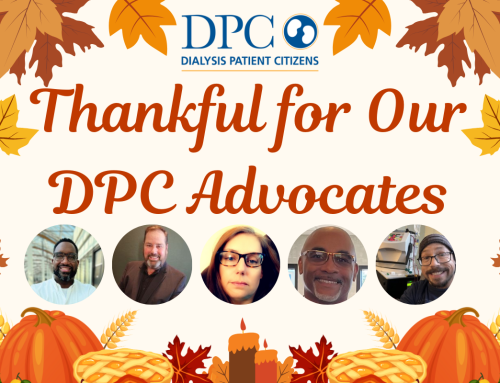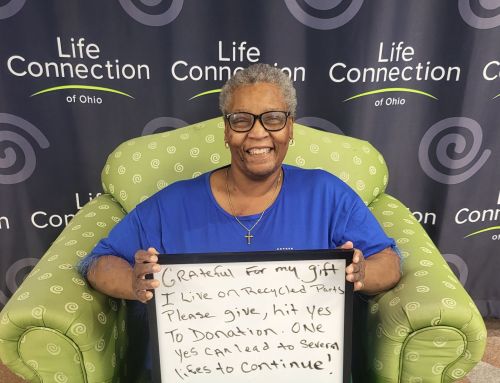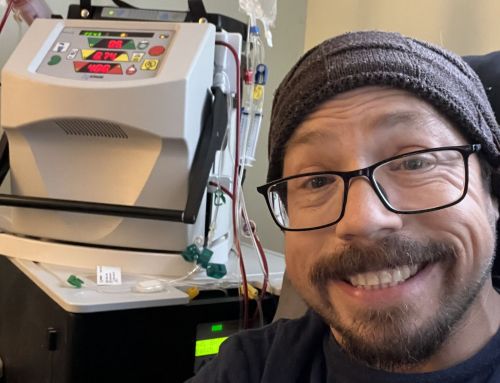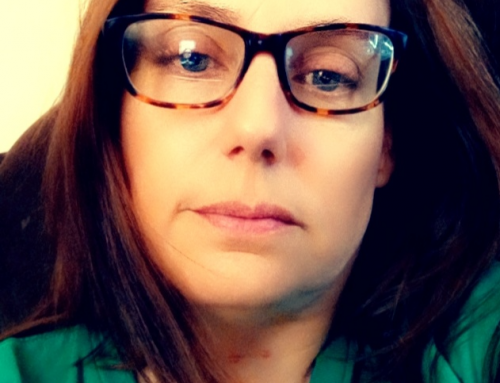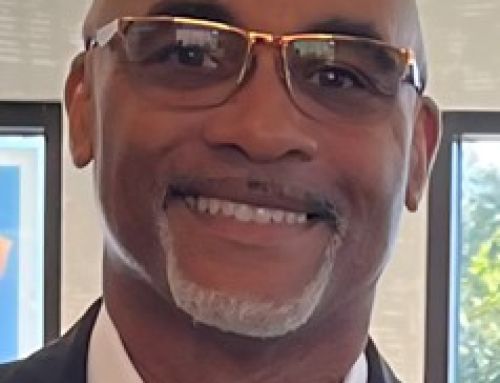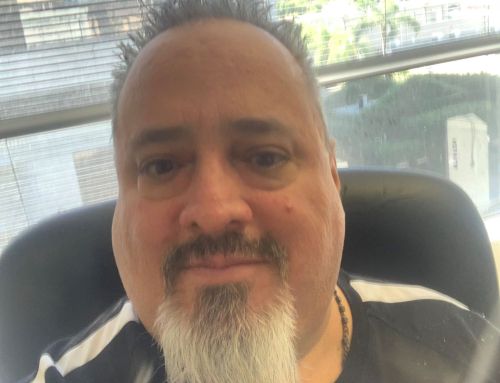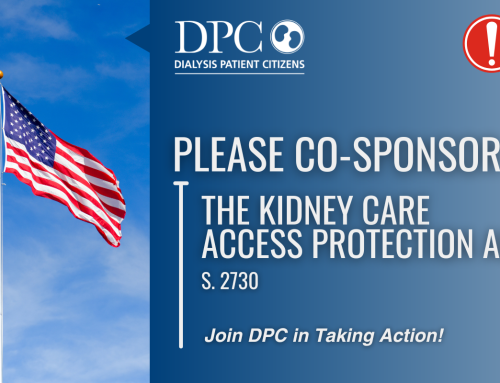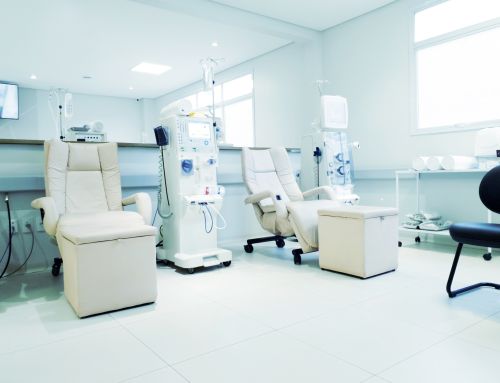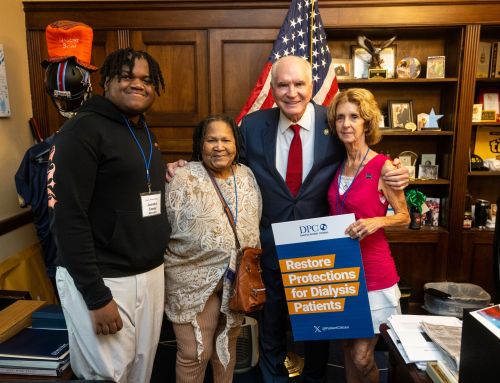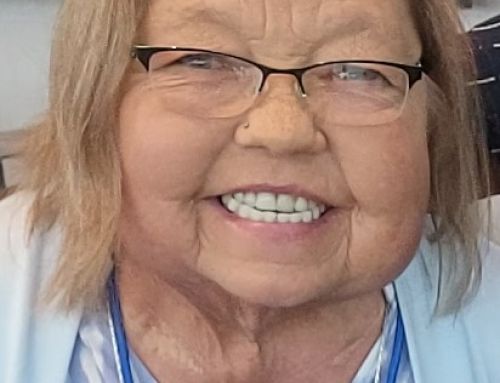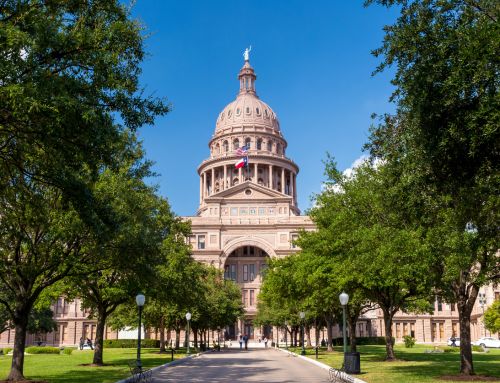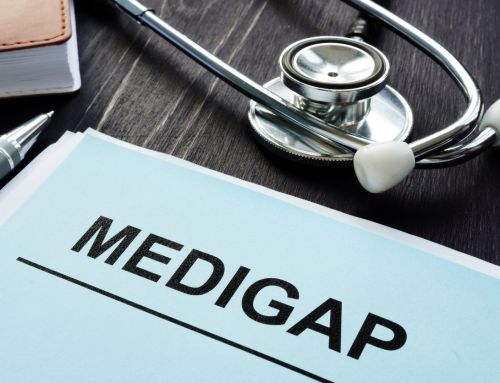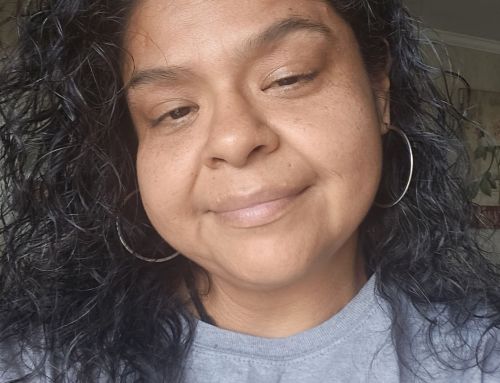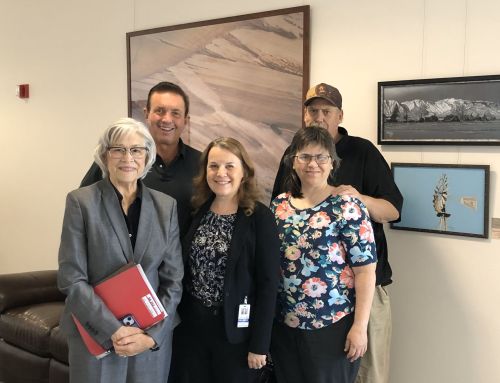August 19, 2024
Hon. Chiquita Brooks-LaSure, Administrator
Centers for Medicare & Medicaid Services
7500 Security Boulevard
Baltimore, MD 21244
Re: CMS-1805-P: End-Stage Renal Disease Prospective Payment System, Payment for Renal Dialysis Services Furnished to Individuals with Acute Kidney Injury, Conditions for Coverage for End-Stage Renal Disease Facilities, End-Stage Renal Disease Quality Incentive Program, and End-Stage Renal Disease Treatment Choices Model
Dear Administrator Brooks-LaSure:
Dialysis Patient Citizens (DPC) writes to offer its comments on the above referenced proposed rule.
DPC’s membership, currently about 35,000, is restricted to kidney disease patients and their family members. DPC is a patient-led organization. Our by-laws require that the President, Vice President and at least 51% of the Board be current dialysis patients. The non-dialysis patients serving on our Board are former dialysis patients with kidney transplants. Our volunteer board members have represented their peers on CMS technical expert panels and/or advisory committees of other health care organizations such as the National Quality Forum and Patient-Centered Outcomes Research Institute. DPC also conducts periodic Membership Surveys to ascertain patients’ experiences with their care and views on health policy issues. DPC is committed to promoting access to high-quality dialysis care for individuals with ESRD; to prevention of, delayed onset of, and safe transition to ESRD among individuals with chronic kidney disease; and access to kidney transplantation as well as to other alternatives to dialysis that may emerge.
Proposal to Allow Medicare Payment for Home Dialysis for Beneficiaries With AKI
CMS is proposing to allow payment for AKI renal dialysis services furnished to beneficiaries in their homes. We strongly endorse this proposal, but caution the Agency that its expectations for take-up may be unrealistically high.
Proposed Annual Payment Rate Update for CY 2025
The proposed rule grants a net increase in the base rate of only 0.8% during a year in which wages, according to Bureau of Labor Statistics, rose 4.2%. MedPAC estimates a margin of zero for dialysis facilities in 2024, with many rural and low-volume facilities in the red. This occurs at a time in which a Supreme Court decision has emboldened many employers to gut their insurance coverage for dialysis, further weakening the financing of our nation’s precious kidney care infrastructure.
According to a ZipRecruiter analysis of Labor Department data, health care has one of the most severe labor shortages among U.S. industry sectors, with 55.6% of job openings unfilled and just 0.29 unemployed workers per opening.
Last year we presented survey data and beneficiary reports illustrating how dialysis patients have been impacted by workforce shortages. While we can’t track statistics for dialysis facilities year-over-year, indicators relating to other provider types demonstrate, as Principal Deputy Administrator Jon Blum has remarked, our health care system is “fragile.”
According to the most recent CMS statistics from the 12-month period ending in March 2023, the median time patients spent in an Emergency Department was 162 minutes, up from 159 minutes in the previous year. In 2020, this figure was 143 minutes. The hospital industry reports that there are 94,000 fewer workers at hospitals than there were four years ago.
Comparing numbers from a 2017 survey on physician appointment wait times by Meritt Hawkins to a 2024 secret shopper study conducted by ECG Management Consultants, average new patient physician appointment wait times have increased significantly. The average wait time for a physician appointment for 15 large metro markets surveyed was 24.1 days in 2017, up 30% from 2014. In 2024, the average wait time for the third next available appointment across 11 medical specialties in 23 U.S. metro areas was 38 days.
It is delusional to think that bare-bones Medicare reimbursements, which continue to fall short of inflation, will allow health care providers to offer competitive compensation as secular demographic factors shrink the pool of available workers.
According to BLS’s most recent forecast, “The slower birth rates of the 1970’s will cause the population ages 55 to 64 to decrease much faster than any other age group. Meanwhile, the 65 and older age group will experience fast growth as all baby boomers age into that category by 2032. This age group’s projected 14.4 million increase in population accounts for over three quarters of the overall projected population growth. Of that 14.4 million increase, about 10.6 million comes from the 75 and over age group, as most of the baby boomers age into that bracket.
“Slower projected growth in the population is expected to constrain growth in the civilian labor force over the projections period… The labor force participation rate is projected to fall from 62.2 percent in 2022 to 60.4 percent in 2032. The principal factor driving the projected decline in the labor force participation rate is a greater share of individuals over the age of 65.”
Just look at the demographic numbers from Pennsylvania, a jurisdiction typical of the northern tier of states where the population is aging faster, and which compiles detailed projections. In 2030, the cohort aging into Medicare eligibility, ages 65-69, will number 826,000 persons. But the cohort aging into the start of their careers, ages 25-29, will number just 788,000. In 2032, Pennsylvania estimates it will need 329,000 new workers annually to keep up with growth and retirements. This includes 16,000 new health professionals and technicians annually to keep up with 7 percent annual growth: including 6,000 new nurses and thousands more medical technicians, the category encompassing dialysis techs. Also needed: 29,000 new workers in healthcare support occupations to fulfill 12 percent annual growth. Again, these are annual requirements projected for each year.
These occupations will compete with needs both critical—law enforcement (3.5% growth) firefighters (3.7% growth) and frivolous—gaming occupations, “personal appearance workers” (9.3% growth).
BLS projects that healthcare will account for 45% of all new job openings by 2032. We worry that CMS’s failure to take labor shortage dynamics seriously will severely hinder providers’ ability to fill those positions. Of course we realize that many occupations comprise “essential workers” and we do not suggest that healthcare vocations’ value trumps, say, the value of first responder or national defense vocations. But all such positions, mostly funded by government, provide outsize value to our society and must be compensated in proportion to that value, lest they go unfilled.
We are also concerned about the interaction between labor shortages and income inequality.
With an increasing share of America’s wealth held by a small percentage of super-rich people, parsimony in public programs can only lead to greater health disparities.
Recent journalism has highlighted how the wealthy are distorting the labor market by offering outsize salaries and fees to those who pamper them, displacing workers from essential jobs. The Wall Street Journal reported on a “pet psychic” who charges $550 for a 90-minute appointment.
The New York Times reports that “demand for round-the-clock domestic help has surged since 2020 and described an agency that “place[s] housekeepers, house managers and other staffers with wealthy families in the New York area — and in their second and third homes or on their yachts… The going rate for a housekeeper is about $45 an hour, up from $30 prepandemic… and an experienced hand can make up to $350,000 a year.”
Instead of hiring babysitters, the super-rich often hire “a group of two or three rotating nannies. They might spend four to seven days living with a family before passing the baton to the next nanny and rotating out for a few days. They typically make about $120,000 a year.”
“More wealthy New Yorkers are interested in full-time private chefs, according to leaders of private chef companies and domestic staffing agencies. The positions can command salaries of about $150,000 — and cover only lunch and dinner.” Or “a laundress — a trained seamstress responsible for all matters related to clothes. An expert laundress might take 30 minutes to fully iron a button-up shirt [who] typically makes about $50 or $60 an hour.”
It should be noted that housekeeping, personal care, food service and laundry are all functions for which health care facilities hire.
But the most concerning part of the article is about medical care:
Sollis Health, which bills itself as the country’s first and only concierge emergency care provider, opened two Manhattan locations this year alone, and one in the Hamptons in 2021.
Memberships, which start at $3,500 annually and increase to $6,000 for those over 45, include same-day appointments, on-site lab testing and round-the-clock virtual care. House calls cost extra. Sollis is an “out-of-network provider,” according to its website, and is not enrolled in Medicare.
In-home services are also offered by NutriDrip, which offers I.V. vitamin drips aimed at revitalizing tired and stressed New Yorkers. A so-called NutriCleanse drip costs $355 for nonmembers and claims to combat “harmful toxins from urban exposure,” through a combination of vitamin C, magnesium, calcium, taurine and other elements. It costs another $100 to book the service at home in Manhattan, or $125 in Brooklyn or Queens. Members who pay $95 a month or $995 a year have access to discounted rates.
The idea that an entity could be paid more to infuse “hangover cure” fluids into a wealthy idler than to provide a life-sustaining treatment for a dialysis patient makes a mockery of health equity. In April, KFF Health News reported that numerous non-profit health systems have established concierge physician practices for the affluent, in stark contradiction of their supposed charitable missions.
Health care occupations must be compensated generously enough that they will appeal to young people when they decide what vocation to pursue, and that workers in these fields will not demand additional remuneration by going outside the system to exclusively service the affluent.
CMS’ series of paltry updates will cause a cascade of administered prices lagging labor market conditions on into the future. These inadequate payments are on a collision course with demographics and income inequality. Continuing a business-as-usual approach, where the Agency acts as an inanimate pocket calculator instead of proactively anticipating and mitigating access problems, is certain to progress from inconvenience to injury for patients.
Proposals Related to TDAPA Add-On Payments
Policymakers have become fixated on payment bundling as a cost containment solution to the point of ignoring any evidence that it can negatively impact beneficiaries. The original PPS, for hospitals, has been effective because it is flexible, offers patients simple-to-use appeal rights, and importantly, incentivizes efficiency gains that take place within a discrete hospitalization and lets the hospital benefit from those gains.
The problem with the ESRD PPS is that many gains from new renal dialysis services are external to the bundle gatekeeper. The ESRD provider, while paid per treatment, is expected to quarterback care longitudinally, from incidence to transplant or end-of-life, to include ongoing education, dietary advice, anemia, phosphorus control, and many other aspects of kidney failure. New renal products that provide quality-of-life gains to patients and/or efficiencies to Medicare expenditures outside of dialysis expenditures represent only costs to the bundle gatekeeper.
Certainly, some additions that reduce hospitalizations or lower mortality result in more revenue to the dialysis organization; but the cost-benefit calculation is thrown off by the fact that the majority of financial benefits go into the “wrong pocket.” The classic case of this in the hospital PPS is early elective deliveries, which generate more income to hospitals but greater cost to the health care system in the form of greater NICU utilization for premature babies. This was one of the very first issues that CMS tackled when given its new authorities under the ACA. Why is the analogous situation under the ESRD PPS being ignored 14 years later?
The typical prescribing scenario in Medicare is that doctors have no disincentive to prescribe and may be incentivized to overprescribe. When prescriptions are paid for by a Part D PDP, PDPs can use formularies or prior authorization to restrict expensive drugs. There is a tripartite relationship between the patient, the physician, and the plan. In such cases, doctors act as advocates for their patients in obtaining the drug, and plans are the entity incentivized to contain costs.
The ESRD PPS replaces the traditional tripartite relationship with a new one—the nephrologist, usually in a joint venture with the dialysis clinic and a gatekeeper incentivized to keep utilization of bundled drugs low; the drug manufacturer; and the Medicare program, which has proven an overseer of ESRD practice primarily interested in minimizing expenditures within the ESRD silo. The patient is removed from the equation, because he or she is never informed about the availability of new drugs by nephrologists who no longer act as advocates for patients.
The design of TDAPA, instead of mitigating the pathologies and uncertainties inherent in a bundling arrangement, instead exacerbates them. This has resulted in bleak prospects for new drugs being developed for dialysis patients. Cara Therapeutics has left the renal space after the failed launch of Korsuva and may be heading for bankruptcy. This means patients with pruritis have no access to an effective treatment for that condition.
Parsabiv is a new calcimimetic. During the 2019-2020 period, when a TDAPA add-on payment was made, 5,105 of 34,924 patients on dialysis (14.2%) received etelcalcetide each month, according to a study by Stuart M. Sprague of NorthShore University HealthSystem. After January 2021 when payment policy changed, only 217 of those patients (0.7%) were receiving etelcalcetide each month. Mean monthly PTH values increased from 483 pg/mL before the policy change to 544 pg/mL after the policy change. Among the 3,560 patients who discontinued etelcalcetide when the payment policy changed in January 2021, mean monthly PTH increased from 579 to 745 pg/mL. We understand that this remains the status quo today.
GSK recently filed with the FDA to remove Jesduvroq, an oral HIF-PHI, from the market due to the inadequate TDAPA and post-TDAPA reimbursement, meaning one fewer option for patients who don’t respond to ESAs. Ardelyx, manufacturer of the drug Xphozah, has filed a lawsuit against CMS rather than accepting TDAPA with its perverse dynamics that all but preclude profitability. This is a blow to patients with inadequate response to phosphate binders or who are intolerant of any dose of phosphate binder therapy.
These are products on which many millions of dollars were invested to improve kidney care. This negative experience means venture capital is unlikely to make such investments in the future. But make no mistake, patients with these conditions are needlessly suffering today (or will be beginning in January in the case of Xphozah). To date, TDAPA has been an abject failure in protecting the most seriously afflicted among an already vulnerable population. In these circumstances, the Agency has accepted or encouraged medical outcomes that have not developed organically, but ensued solely because of Medicare payment idiosyncrasies. We believe this constitutes interference with the practice of medicine within the meaning of Section 1395; but more to the point, it is another betrayal of patients living with a disfavored disease.
DefenCath, CorMedix’s catheter lock solution, started its TDAPA period on July 1. In the view of our members who for various reasons must use catheters, this product should have been deployed immediately; instead there remains uncertainty about its uptake, given that costs are borne by dialysis organizations while the benefits—reduced infections and hospitalizations—accrue mostly to patients and the Medicare HI Trust Fund. Akebia’s Vafseo, an oral HIF-PHI to treat anemia in dialysis patients, will start its TDAPA period in January 2025 after being approved several months ago. This drug could reduce transfusions for patients who don’t respond to ESAs, but again, that is a benefit to patients and to Medicare, not to the bundle gatekeeper.
We remind the Agency that payment bundling is not an end in itself, but an instrument to contain costs that must be deployed while balancing other important considerations: access, quality, and payment adequacy.
CMS’ traditional rulemaking process that hurls thunderbolts from on high and leaves providers to scramble and change their practices to comply is uniquely unsuitable to a situation like bundled products, which involves many moving parts in addition to the unfavorable financial incentive manifested in a bundle. The decision to dispense a drug involves the medical, business, and legal leadership at each dialysis organization; any of those three interests could veto the purchase of a drug if their concerns have not been addressed. At the very least, multiple iterations could be necessary to achieve the optimal conditions for uptake of a drug.
A better way would be to bring stakeholders together at the beginning, to reach consensus on a preferred outcome and then tailor the payment policy interventions to achieve that outcome. This would mean ensuring that drug manufacturers are compensated in line with the value they offer to patients and the Medicare system, and providers are held harmless when they do the right thing.
But let us be clear: for those expensive products needed by a minority of patients, the only way to guarantee access will be individual- rather than population-level reimbursement.
Request for Public Comment on Future Change to the Scoring Methodology To Add a New Adjustment That Rewards Facilities Based on Their Performance and the Proportion of Their Patients Who Are Dually Eligible for Medicare and Medicaid
We have long advocated for facilities serving disadvantaged patients to be judged against their peers, not against facilities serving more affluent patients as the QIP does now. We are happy to see that the agency is ready to move in this direction. QIP penalties disproportionately affect facilities serving low-income beneficiaries and weaken the business case for serving such patients.
However, we are skeptical that the “health equity adjustment” used for hospital and SNF VBP programs is the correct method. We would prefer to see the peer grouping methodology for the Hospital Readmissions Reduction program applied to the QIP.
As you know, the QIP is a penalty-only program and resembles the HRR adjustment more than it does the hospital and SNF VBP programs, which also award bonuses. Moreover, the QIP doubles as a transparency program, with its total performance score required to be posted in facilities. An adjustment to the point system will mangle the TPS, further complicating patients’ already limited understanding of this score and its significance.
On the other hand, stratification into quintiles would promote competition among facilities to perform better in a contest that they have a chance of winning. They would be incentivized to achieve a “best in class” designation and could rightfully publicize such a designation. We are confident that there are facilities doing an outstanding job in serving disadvantaged populations and hope they can be recognized for such work.
Request for information on policy interventions that may increase access to high quality home dialysis within the context of Innovation Center models and across CMS.
The principal lesson learned from the ETC model echoes that from previous research on bonus-and-penalty pay-for-performance programs—they do not work. As Dr. Robert Berenson has noted: “Behavioral economists find that tangible rewards can undermine motivation for tasks that are intrinsically interesting or rewarding. Furthermore, such rewards have their strongest negative impact when they are perceived as being large, controlling, contingent on very specific task performance, or associated with surveillance, deadlines, or threats, as with MIPS.”
We believe that the primary barriers to uptake of home dialysis reside at the level of the individual patient, not the provider. In theory, grant money or add-on payments to address patient-specific or delivery system barriers would be the best policy solution, but legally speaking, such investments could only be justified if they resulted in expenditure reductions downstream. The experience from total-cost-of-care models such as CEC and CKCC is that home patients do not cost less than in-center patients.
The ETC model was always an odd duck in the CMMI portfolio in that it is designed exclusively to favor one treatment modality over another. We are aware of no other such model, not even for reducing low-risk C-sections, a problem that has vexed the health care system for many decades that if mitigated would produce immediate cost savings. We reluctantly conclude that interventions to increase use of home dialysis cannot be justified under the Innovation Center Statute. As before, we urge the Agency to convene stakeholders for an in-depth analysis of how Medicare might best address home dialysis in conformity with the law.
Transplants, on the other hand, are proven money-savers over dialysis, and the Agency should make direct investments to increase transplantation.
Thank you for your consideration of our comments and concerns. If you have any questions or would like additional information, please do not hesitate to contact me or our Vice President of Public Policy Jackson Williams (at 202-768-4506 or jwilliams@dialysispatients.org).
Respectfully submitted,
Hrant Jamgochian, J.D., LL.M.
Chief Executive Officer


